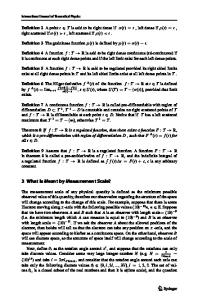Behavior of oxide film at the interface between particles in sintered Al powders by pulse electric-current sintering
- PDF / 1,892,340 Bytes
- 5 Pages / 612 x 792 pts (letter) Page_size
- 95 Downloads / 405 Views
I. INTRODUCTION
PULSE electric-current sintering (PECS), as a newly developed process, has been studied extensively in recent years because it possesses many advantages compared with other sintering methods such as the hot pressing and hot isostatic pressing processes. It has been reported that the PECS process was applied to sinter pure metals,[1,2,3] alloys,[4,5,6] ceramics,[7,8,9] functionally gradient materials,[10,11] and other materials.[12–15] In the PECS process, a pulse electrical current flows directly in the sintered materials and graphite mold. A very high heating efficiency is offered. A high-quality sintered specimen is easily obtained at a lower sintering temperature and in a shorter time than with the conventional processes. Some researchers call this process spark plasma sintering,[6,11,16] or plasma-activated sintering,[7,17] because they postulate that the high electric-pulse power might generate a plasma in a gap or at the contact point between particles. However, the plasma generation during the process has not been verified. So, we prefer to call this process PECS. Although a number of investigations using the PECS process have been carried out, to date, definite results about the cleaning at the surface of powder particles, acceleration of sintering, and so on, have not yet been reported, because it is difficult to study directly the sintering mechanism in the PECS process. On the other hand, Al powder particles are covered with the tenacious surface oxide that inhibits metal/metal contact, and the oxide film cannot be broken and/or removed by heating.[16,18] It is well known that the existence of the oxide film at the powder surfaces has a large effect on the bonding properties of Al powders. It is important to understand the GUOQIANG XIE, Graduate Student, and OSAMU OHASHI, Professor, are with the Graduate School of Science and Technology, Niigata University, Niigata 950-2181, Japan. Contact e-mail: [email protected] MINGHUI SONG, Researcher, and KAZUO FURUYA and TETSUJI NODA, Supervising Researchers, are with the Nanomaterials Laboratory, National Institute for Materials Science, Tsukuba 305-0003, Japan. Manuscript submitted June 28, 2002. METALLURGICAL AND MATERIALS TRANSACTIONS A
behavior of oxide films in the PECS process. But, to date, knowledge about this aspect is still very limited. In the present study, the microstructure of interfaces between particles in specimens sintered by the PECS process were observed using conventional transmission electron microscopy (CTEM) and high-resolution transmission electron microscopy (HRTEM). The behavior of oxide films at the interface between Al particles and the effect of oxide film on the bonding properties of the sintered specimens were investigated. The breakdown mechanism of the oxide film is discussed. II. EXPERIMENTAL METHODS Commercial-grade Al powders were used in the present study. The chemical compositions of the powders are as follows: Al, 99.798; Si, 0.060; Fe, 0.140; Cu, 0.002 wt pct. The particle sizes and distributions ar
Data Loading...










